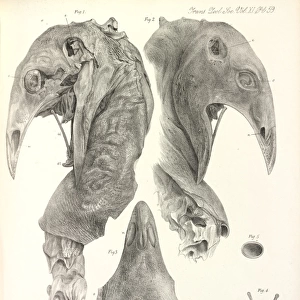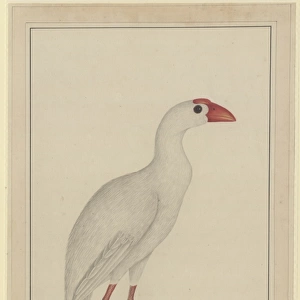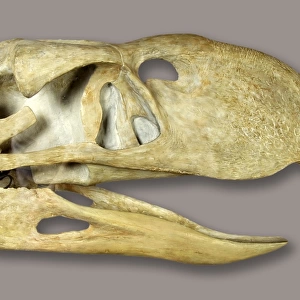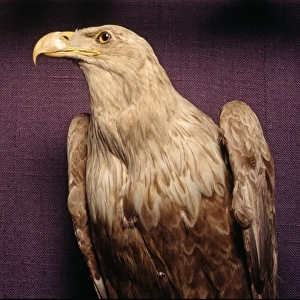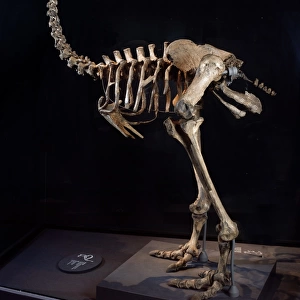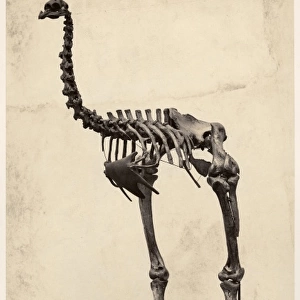Home > Animals > Birds > Dinornithiformes > Related Images
Dinoris sp. moa skeletons
![]()

Wall Art and Photo Gifts from Mary Evans Picture Library
Dinoris sp. moa skeletons
Inscribed J. Benjamin Stone, July 1907. Held in the Natural History Museum Archive PH 128/6
Mary Evans Picture Library makes available wonderful images created for people to enjoy over the centuries
Media ID 8618079
© Mary Evans Picture Library 2015 - https://copyrighthub.org/s0/hub1/creation/maryevans/MaryEvansPictureID/10707061
Archive Bone Dinoris Dinornis Dinornithidae Dinornithiformes Emeidae Exhibit Flightless Giant Moa Ratite Sauropsid Sauropsida Skeleton
EDITORS COMMENTS
1. Title: "Discovering the Anatomy of the Giants: Dinornis sp. Moa Skeletons, July 1907" This photograph, inscribed by J. Benjamin Stone in July 1907, showcases a remarkable find from the Natural History Museum Archive (PH 128/6). The image presents a collection of skeletons belonging to Dinornis sp., an extinct species of moa, a flightless bird native to New Zealand. Moas were ratite birds, a group of large, flightless birds that also includes the ostrich, emu, and rhea. The Dinornis genus is particularly noteworthy for its large size, with some species reaching up to 12 feet (3.7 meters) in height. The skeletons in this photograph provide a fascinating glimpse into the anatomy of these giant birds, which once roamed the forests and grasslands of New Zealand. The Sauropsida classification includes both reptiles and birds, and moas are part of the Aves subclass. The Dinornithiformes order and Dinornithidae family to which Dinornis belongs are characterized by their robust, heavy skeletal structures. The anatomy of these birds reveals adaptations for their terrestrial lifestyle, such as powerful legs for locomotion and a large, keeled sternum for flightless flight muscles. This photograph is a valuable historical record of these extinct birds and offers a unique perspective on the natural history of New Zealand. The intricate details of the bones, preserved for over a century, continue to captivate and inspire researchers and visitors alike. The Natural History Museum's extensive archive, including this photograph, is an invaluable resource for understanding the evolution and diversity of life on Earth.
MADE IN AUSTRALIA
Safe Shipping with 30 Day Money Back Guarantee
FREE PERSONALISATION*
We are proud to offer a range of customisation features including Personalised Captions, Color Filters and Picture Zoom Tools
SECURE PAYMENTS
We happily accept a wide range of payment options so you can pay for the things you need in the way that is most convenient for you
* Options may vary by product and licensing agreement. Zoomed Pictures can be adjusted in the Cart.




